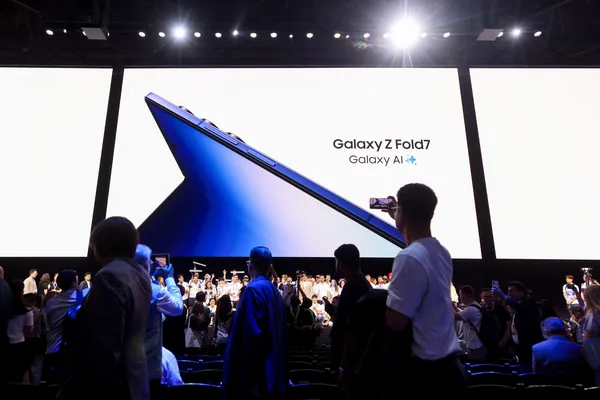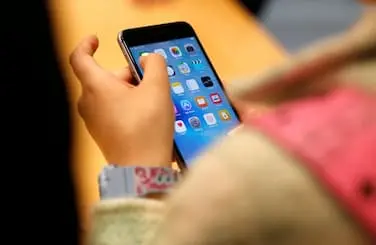Samsung Set to Launch First Trifold Smartphone in 2025, Redefining Foldable Innovation
Samsung is preparing to launch its first trifold smartphone in 2025, aiming to revolutionize the foldable tech space. With a triple-folding display and enhanced multitasking capabilities, the device could reshape the future of mobile computing.
In a bold move to push the boundaries of smartphone design, Samsung is reportedly planning to unveil its first trifold smartphone in 2025, signaling a major evolution in the company’s foldable product lineup. The news comes as foldables slowly shift from niche curiosity to mainstream innovation, and Samsung — already the industry leader in foldable tech — aims to further solidify its dominance by introducing a device that folds not once, but twice. ### What Is a Trifold Smartphone?
Unlike current foldables such as the Galaxy Z Fold and Z Flip, which feature single folding hinges, Samsung’s upcoming trifold model will incorporate two hinges, allowing the screen to fold into thirds.
When fully unfolded, the device is expected to reveal a display nearing 10 inches, transforming it into a tablet-sized canvas suitable for productivity, entertainment, and multitasking. When folded, the device will likely resemble a thick smartphone — still pocketable, but much more powerful in terms of utility. ### Leaks, Patents, and Prototypes
While Samsung has not officially confirmed the trifold device, several patents and prototype videos from industry insiders and trade show demos offer a glimpse of what’s to come.
The trifold concept has been under development at Samsung Display for years, with the company showcasing experimental designs such as the "Flex G" and "Flex S" during previous tech expos. These prototypes featured: - Dual-folding AMOLED screens - Flexible ultrathin glass (UTG) layers for durability - Seamless app continuity across panel transitions - Multimodal display orientation (e. g.
, tent mode, Z-shape)
Industry watchers believe Samsung’s upcoming device will build upon these design elements with refinements aimed at consumer use. ### Why 2025?
According to analysts and insiders, the 2025 timeline aligns with: - Market readiness: Foldables are gaining traction globally, but a trifold requires consumers to feel confident in both the tech and the price. - Supply chain maturity: Producing durable, high-resolution, multi-fold displays at scale remains a challenge, but Samsung Display is nearing mass-production capabilities.
- Competition pressure: Chinese brands like Huawei, Xiaomi, and TCL are also experimenting with multifold and rollable form factors. Samsung wants to preempt rival launches. Ross Young, CEO of Display Supply Chain Consultants (DSCC), noted, “Samsung’s trifold project is not a gimmick.
It’s a calculated next step. The company wants to debut this device only when the engineering, software, and ecosystem are fully ready. ”
### Expected Features and Specs (Leaked/Forecasted)
Though full specs are under wraps, leaks suggest the trifold may feature: - **9.
8 to 10. 2-inch AMOLED screen when unfolded** - **Triple-layer UTG with advanced hinge protection** - **Snapdragon 8 Gen 4 or Exynos equivalent chipset** - **S Pen support with stylus-specific modes** - **Under-display camera for a seamless viewing area** - **Split-screen multitasking for 3+ apps simultaneously** - **Battery innovation with segmented dual-cell design**
Samsung is also likely to debut new software UI layers, possibly a refined version of One UI Fold Edition, to accommodate the unique layout and orientation possibilities of a triple-panel display. ### Implications for the Foldable Market
Samsung has long led the foldables race, with its Galaxy Z Fold and Flip series dominating sales in a niche but growing segment.
The company controls over 70% of the global foldable market (as of 2024), though its lead is narrowing as Chinese brands introduce aggressive alternatives. A trifold device could: - Reinforce Samsung’s technological leadership - Appeal to creatives, mobile professionals, and power users - Blur the lines between smartphones, tablets, and ultrabooks - Catalyze a new productivity-first segment in the Android ecosystem
Market analysts predict that the foldables category could grow from 20 million units in 2023 to over 50 million units by 2026, with advanced form factors like trifolds and rollables taking an increasing share. ### Challenges: Form, Function, and Price
Despite the excitement, the trifold launch won’t be without hurdles.
Potential concerns include:
- Durability: With two hinges and three panels, the structural integrity of the device will be under heavy scrutiny. Samsung has reportedly increased UTG thickness and hinge lifecycle testing to address this. - Bulk and Weight: A trifold is likely to be bulkier than current foldables.
Managing portability while maintaining screen real estate will be key. - Battery Life: Powering a 10-inch screen with high refresh rates and multi-tasking will require next-gen battery engineering. Samsung may use a multi-cell solution similar to tablets.
- Price Tag: The first generation of the trifold may cost upwards of $2,500, making it a premium device targeted at early adopters. - App Optimization: Developers will need to adjust UI/UX designs for more complex display transitions. Samsung may work with Google to build native Android support for trifolds.
### Trifold vs Rollable: The Bigger Innovation Battle
Interestingly, Samsung’s trifold initiative comes as rollable smartphones gain buzz. Companies like Motorola (Lenovo) and Oppo have demoed rollables that expand vertically or horizontally to transform into tablets. So which is the future — trifold or rollable?
- Trifolds offer instant multi-tasking and productivity, but can be bulkier.
- Rollables offer sleeker designs and elegant screen expansion, but involve complex motorized mechanisms. Samsung has patents for both. It may ultimately pursue a dual-pronged strategy, depending on consumer adoption and use cases.
### Ecosystem Synergy and Samsung’s Long Game
Samsung isn’t just building hardware — it’s building an ecosystem. A trifold smartphone will integrate with: - Galaxy Watch, Galaxy Buds, and Galaxy Tab - Samsung DeX for desktop-like productivity - SmartThings for IoT control - S Pen and Samsung Notes for creative professionals
In doing so, Samsung hopes to build stickiness around its brand and platform, especially as Apple and Google accelerate their cross-device integration. ### Conclusion: More Than Just a Fold
Samsung’s upcoming trifold smartphone is not just a novelty device — it represents a bold vision for the future of mobile technology.
As smartphones increasingly serve as our primary computing tools, innovations like the trifold allow for new workflows, experiences, and form factors that can replace tablets, laptops, and even desktop use in some scenarios. With 2025 fast approaching, all eyes are on Samsung to deliver a device that is not only impressive on stage, but also practical, durable, and usable in real-world settings. If successful, it could ignite the next big wave in smartphone evolution — one that folds and unfolds in entirely new dimensions.




